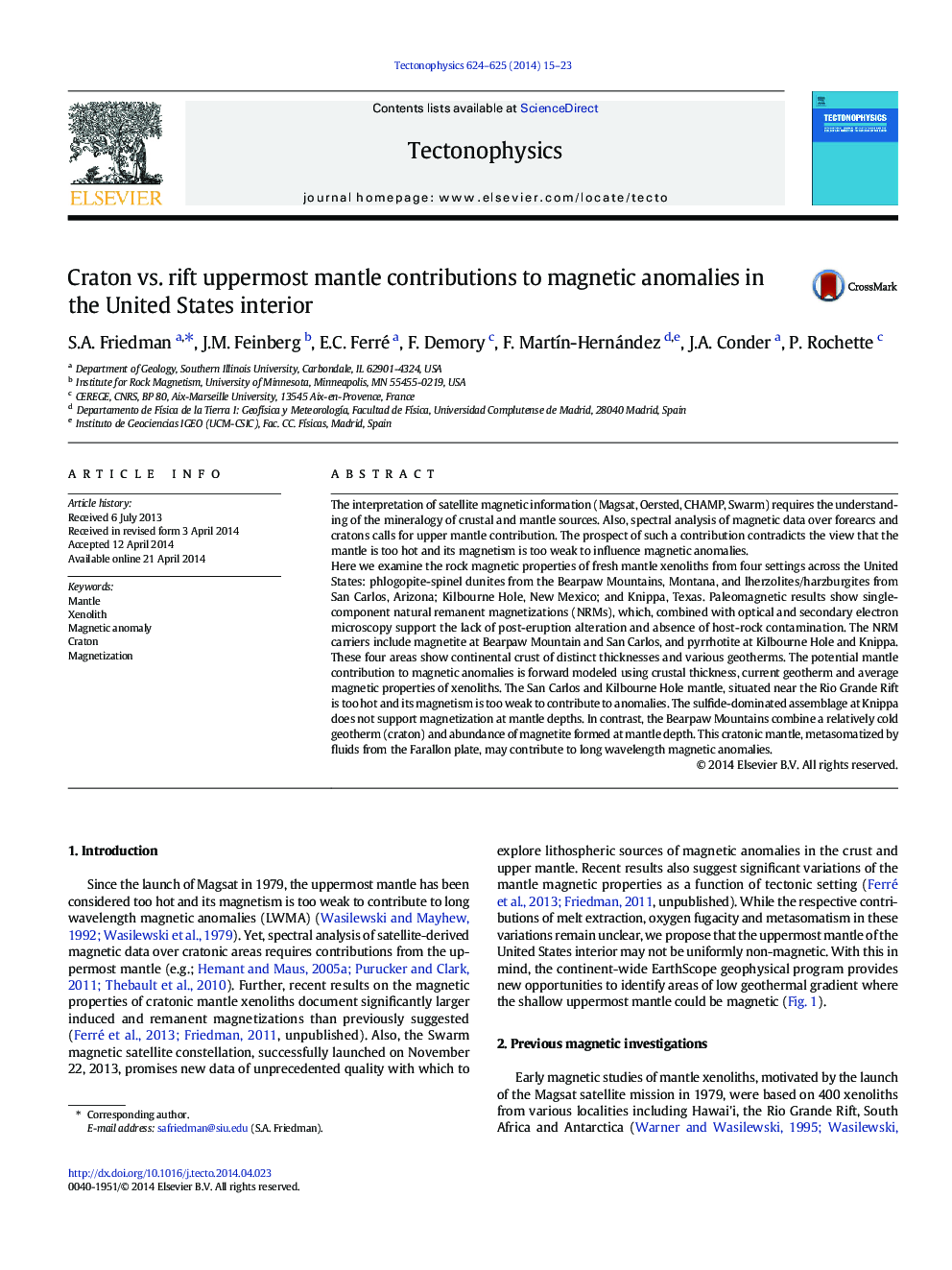| کد مقاله | کد نشریه | سال انتشار | مقاله انگلیسی | نسخه تمام متن |
|---|---|---|---|---|
| 4691998 | 1636766 | 2014 | 9 صفحه PDF | دانلود رایگان |

• Magnetite is the main carrier of magnetic remanence in upper mantle peridotites.
• The cratonic upper mantle may contribute to long wavelength magnetic anomalies.
• The off-craton upper mantle does not contribute to magnetic anomalies.
• Subcontinental metasomatism modifies the upper mantle magnetic properties.
The interpretation of satellite magnetic information (Magsat, Oersted, CHAMP, Swarm) requires the understanding of the mineralogy of crustal and mantle sources. Also, spectral analysis of magnetic data over forearcs and cratons calls for upper mantle contribution. The prospect of such a contribution contradicts the view that the mantle is too hot and its magnetism is too weak to influence magnetic anomalies.Here we examine the rock magnetic properties of fresh mantle xenoliths from four settings across the United States: phlogopite-spinel dunites from the Bearpaw Mountains, Montana, and lherzolites/harzburgites from San Carlos, Arizona; Kilbourne Hole, New Mexico; and Knippa, Texas. Paleomagnetic results show single-component natural remanent magnetizations (NRMs), which, combined with optical and secondary electron microscopy support the lack of post-eruption alteration and absence of host-rock contamination. The NRM carriers include magnetite at Bearpaw Mountain and San Carlos, and pyrrhotite at Kilbourne Hole and Knippa. These four areas show continental crust of distinct thicknesses and various geotherms. The potential mantle contribution to magnetic anomalies is forward modeled using crustal thickness, current geotherm and average magnetic properties of xenoliths. The San Carlos and Kilbourne Hole mantle, situated near the Rio Grande Rift is too hot and its magnetism is too weak to contribute to anomalies. The sulfide-dominated assemblage at Knippa does not support magnetization at mantle depths. In contrast, the Bearpaw Mountains combine a relatively cold geotherm (craton) and abundance of magnetite formed at mantle depth. This cratonic mantle, metasomatized by fluids from the Farallon plate, may contribute to long wavelength magnetic anomalies.
Journal: Tectonophysics - Volumes 624–625, 11 June 2014, Pages 15–23